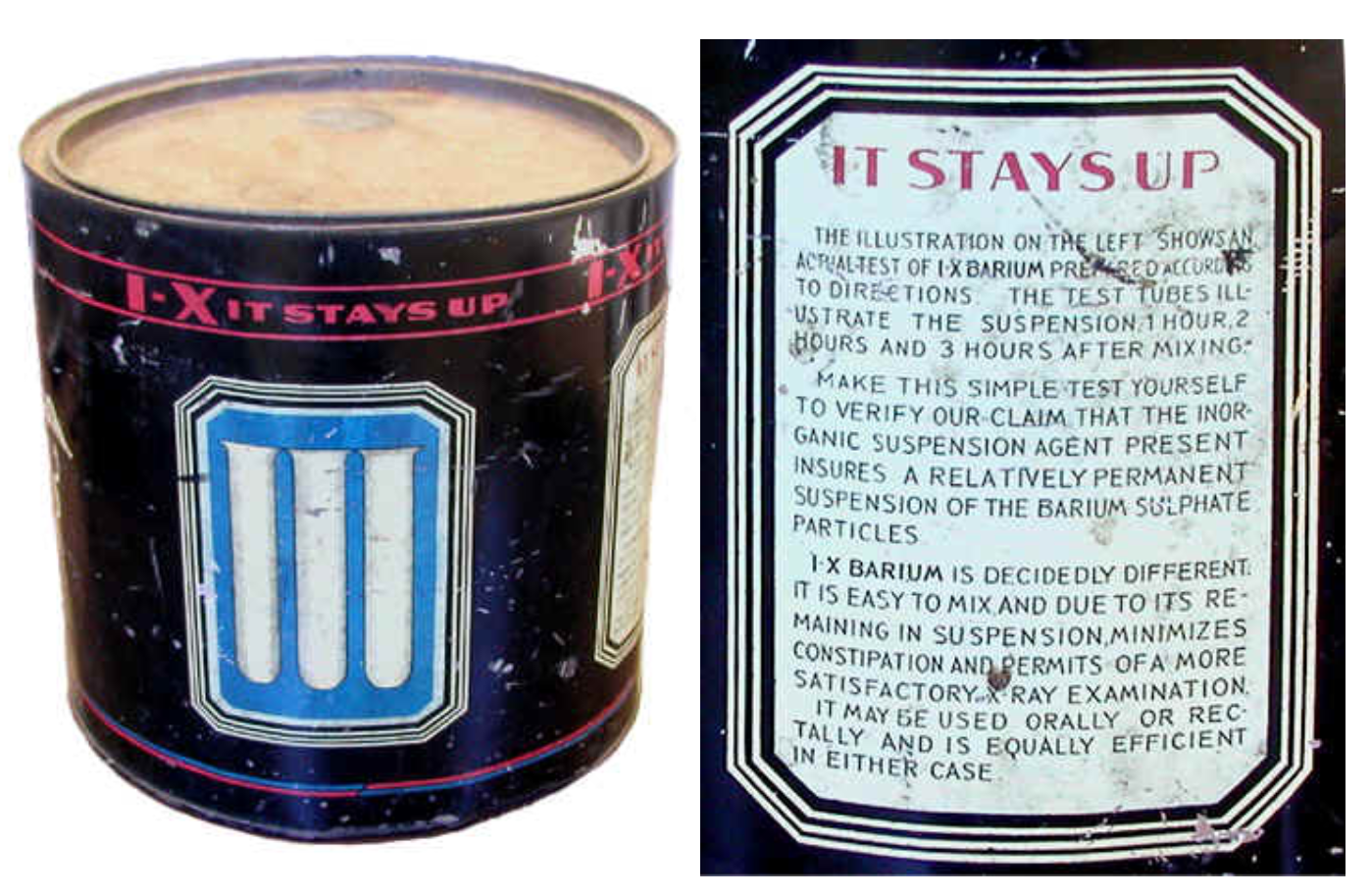I-X Barium Meal (ca. 1920s)
Barium sulfate is used as a contrast agent to improve the visualization of the gastrointestinal tract in an X-ray image. In the early days (ca. 1910-1920), there were a few instances where barium sulfide, which is poisonous, was administered rather than barium sulfate. Not good. To prevent this from happening again, various companies marketed barium sulfate strictly for the X-ray market, often under their own brand names.

A major problem with barium sulfate is that is is not soluble in water. The best you can do is to keep it in a suspension. If it settles out during an X-ray exam, the images will be compromised. In addition, there is the possibility that the accumulated barium sulfate could block constrictions in the GI tract. In the 1920s, various formulas were developed to keep the barium in suspension, and one of the first to be marketed was I-X Barium Meal produced by Industrial X-ray Research Laboratories of St. Louis. So now you know what "I-X it stays up" means.
Quoting a 1929 advertisement: "I-X Barium Meal really stays in suspension and actually eliminates constipation caused by taking Barium Sulphate internally." This advertisement also announces "an improved package" that is different from the one pictured above. I assume the one shown here is the older design.
For an informative historical discussion about the use of barium sulfate see "Roentgen and the New Light - Roentgen's Moment. Part 4: Of Gastrointestinal Radiology, Bread and Butter; or The Flowering of Barium Sulfate" by D. Patton. Invest. Radiology 29 (4): 472-479; 1994.
Size: 9" high and 9" in diameter
References
- Industrial X-ray Research Laboratories advertisement. American Journal of Roentgenology and Radium Therapy. Volume 21. 1929.
- E.R. Grigg. Trail of the Invisible Light. Charles C Thomas, 1965.
